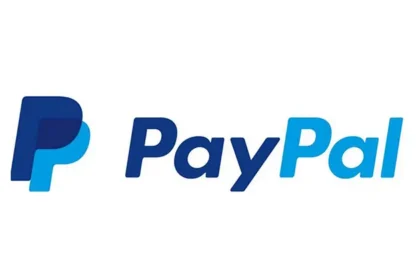DXI (Digital Experience Index). is a company that aims to boost CRO or Conversion Rate Optimization for businesses. Conversion means the number of buyers divided by the number of visitors. The worldwide e-commerce average of conversion is only 2 percent. Everyone is looking to optimize conversions rates using different methods to boost it from 2 to 3 percent. The elusive buyer always seems to be looking for something else!
It all began back in 2014 when Kilambi and David Dodds, both scientists and engineers went looking for products at websites that they wanted for their engineering companies. Not finding what they wanted or liked what they saw, they found that most site owners are clueless about what their visitors are actually looking for.
The duo set about a completely mathematical way to express this problem of what visitors view on sites, their level of their engagement and how satisfied they exit. “We believe that a very scientific and quantitative method converts the subjective nature of visitors into a mathematical number/index and that became the start point of CRO. The company follows a very unique methodology and no one else is doing exactly what DXI is doing”, says Kilambi the CEO.
DXI tracks and measure what converts and quantifies these experiences and engagement into a single dynamic number using a proprietary formula. It took about a year to build this formula and 42 revisions to perfect it. “No one else has forayed into this field and we took it as a challenge despite not being marketing people and we did it”, he says.
The formula was ready in 2015 for anyone that wanted to use it. Any website that wanted to get data using the pixel could trace non-personal data like the number of visits, time on page what they are searching for and the final shopping cart data. The formula does not collect personal data like the identity of the individual visitors or any other details. Every visitor gets one number and the website gets an overall average much like a credit score. The data can be used to understand their users’ behavior and improve the site and increase conversions.
Despite the formula being ready, not many people were ready to use it in indefinite terms. It took another six months in 2017 to correlate the data to something tangible that is CRO. Once the scores are corelated, there was something tangible to influence conversion. The company was finally able to show that companies could actually increase conversion rates with test cases.
It was journey of 4 years from the formula development to its initial testing and launch. It was initially launched as a SAS tool where websites could pay very little every month and use it to see trends and conversions. Currently it has also been developed into a Hybrid SaaS tool focused on CRO giving business owners concrete data.
DXI has a unique and proprietary formula that is not divulged. It is best used as a utility tool with scores from zero to hundred. Higher the score, the more likely the person will buy or all buyers have high DXI scores and the converse. It tracks the journey map of what the person was doing, how long did they stay, what they searched for giving a real pattern.
Product is based on deep machine learning formula. The main issue of machine learning is that it is complicated to learn and understand. But DXI has made it simple to use and understand. Machine learning is all about learning from data and training matters with a clear understanding of good and bad outcome.
“DXI is an auto classifier. It means that the data is auto classified into good and bad by the DXI score. A simple example is that a higher than average DXI is good and lower than average is bad. The advantage is that one does not have to manipulate a training set but have one that is already well-defined. The DXI traces the entire journey on site very clearly from the initial browsing experience to buying. In typical machine learning, one needs to separate data sheet for training and another for evaluation. With DXI it all happens at the same time. It is like providing data scientists in a box,” added the CEO.
DXI can easily integrate with all marketing and e-commerce sites and also physical stores where the consumers journey can be traced easily. The USP of the product is that it goes beyond online to onsite data experience indexing.
Cases studies:
An aquarium achieved an increase in sales from 3 percent to 12 percent. DXI showed them that buying tickets was augmented when there was an offer giving parking discount because people are looking to save expenses. Ticket sales rose and fell with and without other offers too.
In an e-commerce site DXI helped bring about an increase in sales by 32 percent while reducing discounts from 20 to 10 percent. The data showed that people were not just looking for discounts but also for correct information. When they had the right information they bought despite giving only half the discount rates.
For a big online shoe company, DXI showed that what mattered was easy search and store locator. Those that that made purchase were those that found the locators. This indicated some very non-obvious matters that influence sales for companies.
DXI is fast helping convert indefinite visitors into potential buyers with continual innovations. In fact, innovation is everything in DXI. The founders have learnt from scratch not being marketing people and are now continually looking at ways to keep ahead in the market. Innovation has been driving changes and improvement in the company and its products.
Today the company offers several modules for active use for website with the Engagement Benchmarking. The m-DXI is meant for mobile users. There are also separate modules for social media like Facebook, Twitter and also another one to rate call centers to know how satisfied people are when people call back.
The Win Loss module understands who are the buyers and non-buyers focusing on the high prospects at the top. The RFM model or Recency, Frequency and Monetizing model targets relevant customers and dividing them into groups with their respective profiles. The aim is to help sites improve and get customers to come as often as possible and induce them to make as much buying as possible.
The KNN model or Kth Nearest Neighbor is based on similar buying patterns. If A if a buyer and B resembles A’s buying patterns then the two are put into a bucket and offer similar solutions. Lastly, Behavior Clustering, takes all the data with high DXI and low DXI using a black-box approach and analyzing them to use it for better engagement and conversions.
The entire exercise of using the DXI products is to aim at a Goal Setting of increase in sales from 2 percent to 3 percent by forecasting and getting better conversions. The company envisions to be associated with almost every website in the next 5 years and attain its targeted growth while helping its customers too.










